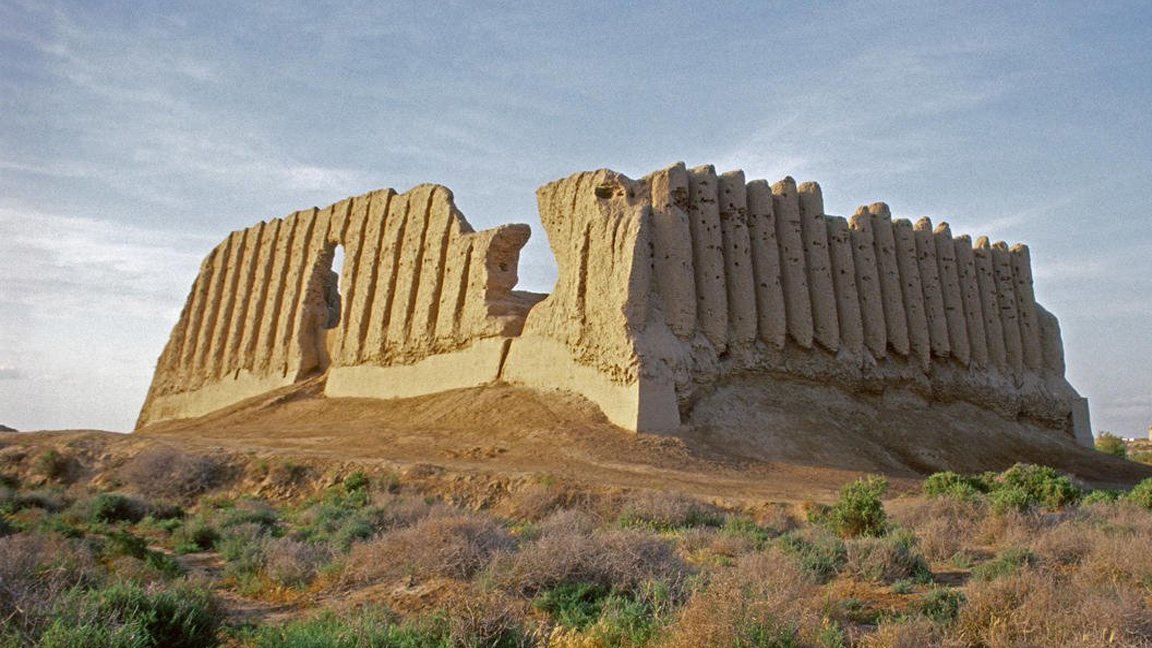


Merv consists of a few discrete walled cities very near to each other, each of which was constructed on uninhabited land by builders of different eras, used, and then abandoned and never rebuilt. Four walled cities correspond to the chief periods of Merv’s importance: the oldest, Erkgala, corresponds to Achaemenid Merv, and is the smallest of the three. Gäwürgala, which surrounds Erkgala, comprises the Hellenistic and Sassanian metropolis and also served as an industrial suburb to the Abbasid/Seljuk city, Soltangala – by far the largest of the three. The smaller Timurid city was founded a short distance to the south and is now called Abdyllahangala. Various other ancient buildings are scattered between and around these four cities; all of the sites are preserved in the “Ancient Merv Archaeological Park” just north of the modern village of Baýramaly and thirty kilometers west of the large Soviet-built city of Mary (Herrmann 1993).
The best-preserved of all the structures in Merv is the 12th-century mausoleum of Sultan Sanjar. It is the largest of Seljuk mausoleums and is also the first dated mosque-mausoleum complex, a form which was later to become common. It is square, 27 meters per side, with two entrances on opposite sides; a large central dome supported by an octagonal system of ribs and arches covers the interior. The dome’s exterior was turquoise, and its height made it quite imposing; it was said that approaching caravans could see the mausoleum while still a day’s march from the city. The mausoleum’s decoration, in typical early Seljuk style, was conservative, with interior stucco work and geometric brick decoration, now mainly lost, on the outside. With the exception of the exterior decoration, the mausoleum is largely intact, and remains, just as is in the 12th century, Merv’s main tourist attraction.